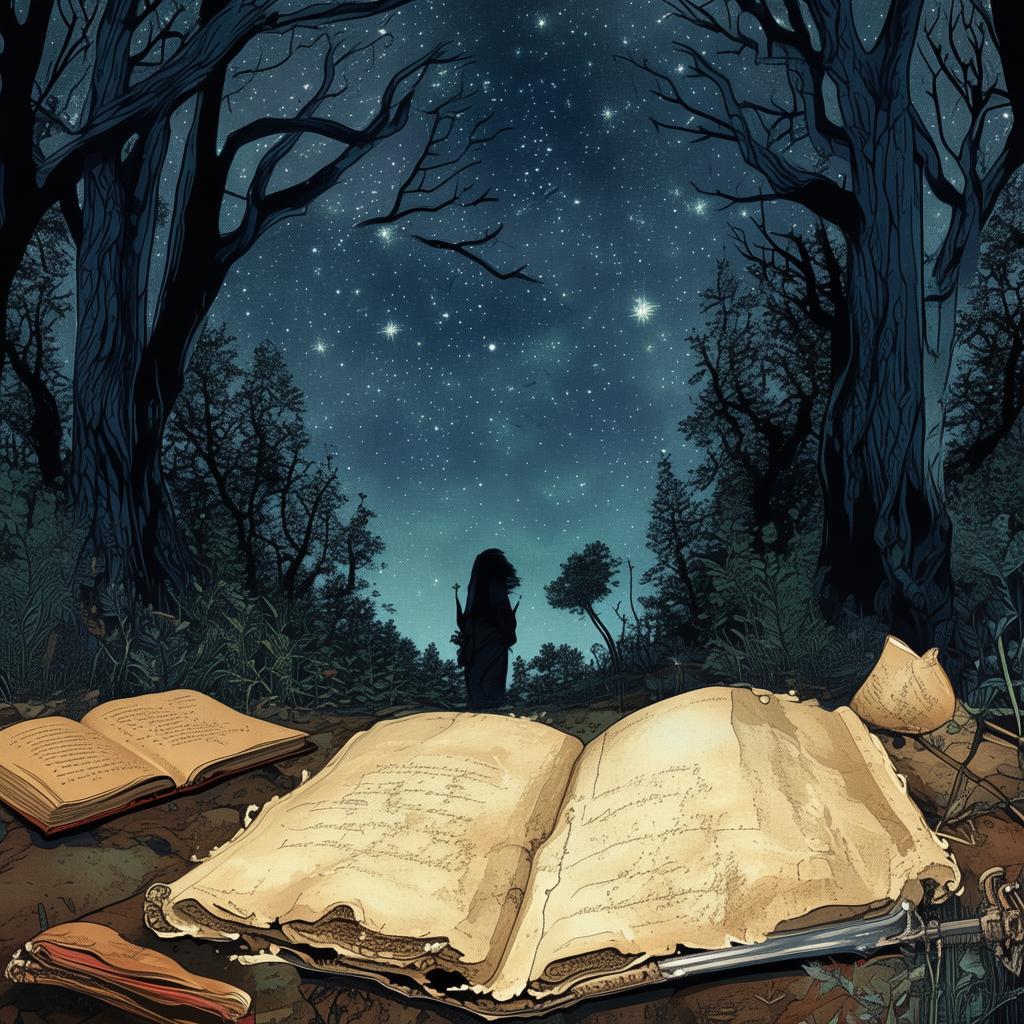The Resonance of the Requiem
The ancient abbey of St. Eribon stood on the edge of a desolate, windswept plain, its walls cloaked in ivy and silence. Inside, the air was thick with the scent of decay and the echo of a symphony that seemed to have no end. The abbey had long been abandoned, a relic of a bygone era, its purpose now shrouded in mystery.
At the heart of the abbey lay the grand hall, where the grand piano sat silent, its keys covered in dust and cobwebs. It was here that the Symphony of the Damned had once played, a collection of 12 pieces written by a composer whose name had been lost to time. Each piece was a testament to the seven deadly sins, and it was said that anyone who could perform the symphony would have the power to manipulate the very fabric of reality.
Among the ruins of the abbey, a young woman named Elara wandered. She was a soprano of exceptional talent, but her voice had been silenced by a curse placed upon her by her own father, a former monk of St. Eribon. He had forbidden her to sing, believing it to be a sin that would damn her soul. Despite this, Elara's passion for music had never waned, and she was determined to uncover the truth behind the Symphony of the Damned.
One night, as the moon hung low in the sky, Elara discovered a hidden chamber beneath the grand hall. Inside, she found the 12 sheets of music, each one adorned with symbols of the seven deadly sins. She realized that to perform the symphony, she would have to confront her own inner demons and the sins that plagued her soul.
The first piece, titled "Lust," was a haunting ballad that spoke of forbidden love. Elara found herself drawn to the story of a young knight who had fallen in love with a princess, despite knowing it was forbidden. She felt a pang of recognition, for she too had experienced forbidden love, but her own tale was far darker.
The second piece, "Gluttony," was a relentless march that seemed to echo the hunger within Elara's soul. She remembered the days she spent starving, her body wasting away as she denied herself the sustenance she so desperately needed. She realized that her gluttony was not for food, but for power and control.
As she progressed through the symphony, each piece brought forth a different sin, and with it, a different aspect of Elara's own soul. She confronted envy, pride, sloth, wrath, and finally, despair. Each sin tested her resolve, pushing her to the brink of madness.
The final piece, "Hubris," was the most difficult to confront. It was a triumphant fanfare that celebrated the arrogance of a man who believed he could control the very forces of nature. Elara saw in this piece her own hubris, for she had sought to manipulate the symphony to save her own soul, without considering the consequences.
As Elara reached the end of the symphony, she found herself at the piano, her hands trembling with anticipation. She took a deep breath and began to play. The music filled the hall, and with each note, the walls seemed to crumble away, revealing the truth behind the abbey's purpose.
It was then that Elara realized the symphony was not just a collection of musical pieces, but a mirror to the human soul. The composer had intended for the symphony to be a guide to redemption, a way for people to confront their own sins and seek forgiveness.
As the final note echoed through the hall, Elara felt a surge of energy course through her veins. The curse that had bound her voice was lifted, and she began to sing. Her voice was pure and powerful, filling the space with a melody that was both haunting and beautiful.

In that moment, Elara understood that the Symphony of the Damned was not a tool for manipulation, but a beacon of hope. It was a reminder that everyone has the power to confront their own demons and seek redemption.
As the sun began to rise, casting a golden glow over the desolate plain, Elara left the abbey behind. She had found the strength within herself to confront her own sins, and in doing so, she had found a new purpose.
The Symphony of the Damned had spoken, and Elara had listened. She had become the living embodiment of the symphony's message, a reminder to all that redemption is possible, even for those who have strayed the farthest from the light.
✨ Original Statement ✨
All articles published on this website (including but not limited to text, images, videos, and other content) are original or authorized for reposting and are protected by relevant laws. Without the explicit written permission of this website, no individual or organization may copy, modify, repost, or use the content for commercial purposes.
If you need to quote or cooperate, please contact this site for authorization. We reserve the right to pursue legal responsibility for any unauthorized use.
Hereby declared.









